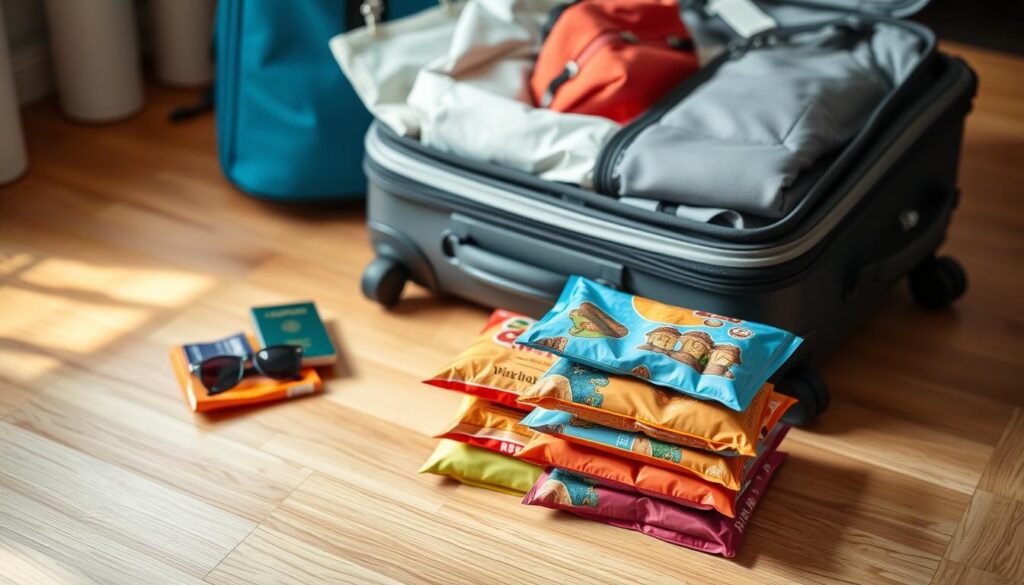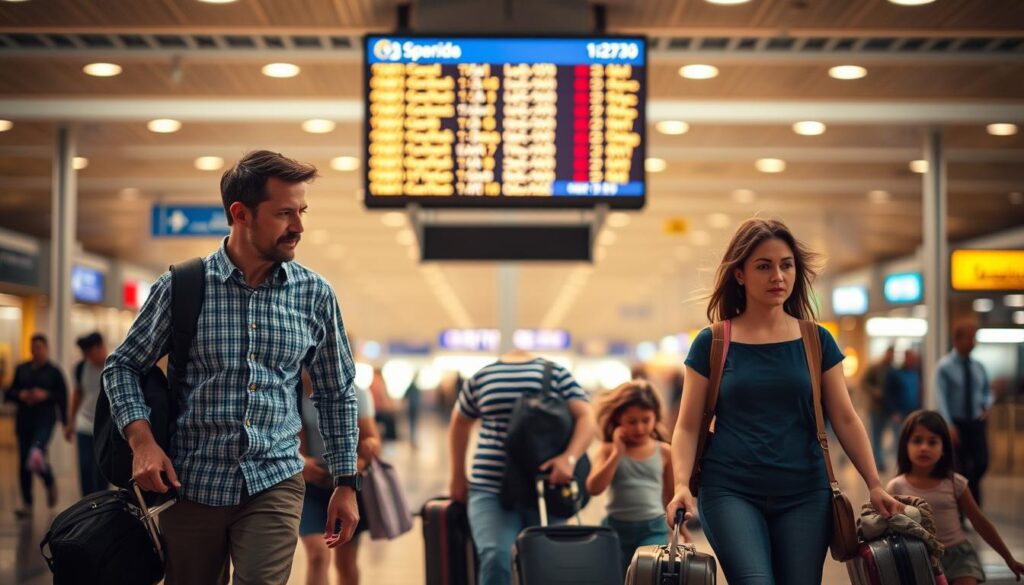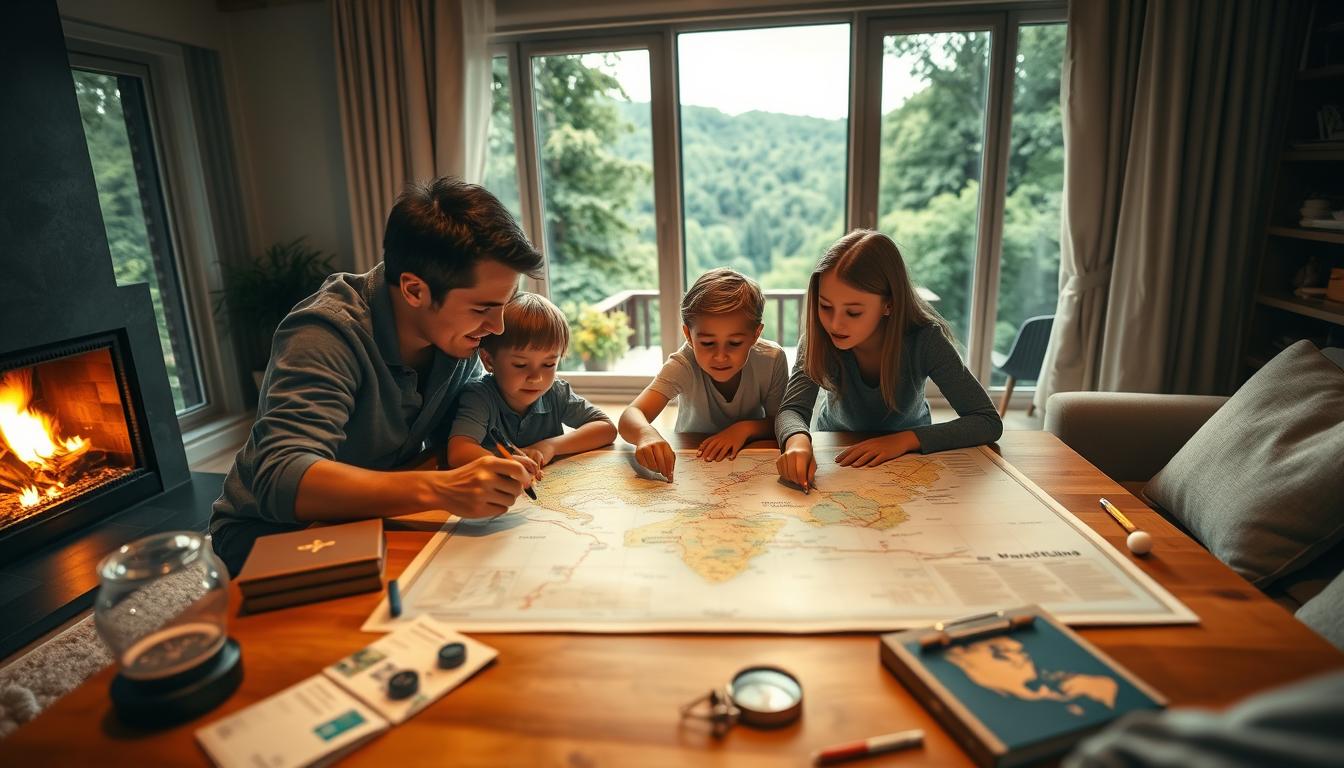
There’s nothing quite like exploring the world with your kids, but let’s face it—traveling with little ones can be a mix of joy and chaos. As someone who’s spent years navigating airports, hotels, and foreign landscapes with my own children, I’ve learned that the key to a stress-free adventure lies in preparation, flexibility, and a little creativity.
Recently, I embarked on a multi-continent journey that tested every tip and trick I’d gathered over the years. From the bustling streets of Tokyo to the serene landscapes of New Zealand, my family and I experienced it all. Along the way, I discovered that with the right mindset and tools, even the most challenging moments can become memorable experiences.
What I’ve learned is that stress-free family travel isn’t just about avoiding meltdowns (though that’s a bonus!). It’s about creating a balance between logistics and fun, ensuring everyone—from the youngest child to the most seasoned adult—feels seen and heard. In this guide, I’ll share actionable tips gathered from my own travels, along with insights from fellow parents and travel experts, to help you plan your next adventure with confidence.
Whether you’re booking flights, packing snacks, or navigating unfamiliar destinations, these tips will help you create a journey that’s as enjoyable as it is memorable. So, let’s dive in and explore how to make your next family trip one for the books!
Key Takeaways
- Proper planning and flexibility are essential for stress-free family travel.
- Involving children in trip planning increases their excitement and satisfaction.
- Packing smart and scheduling downtime can significantly reduce travel stress.
- Teaching children safety rules and packing essentials like snacks can enhance the travel experience.
- Quality family interactions improve when screen time is limited during trips.
Setting a Flexible Itinerary for Stress-Free Family Trips
Creating a flexible itinerary is key to ensuring everyone enjoys the trip. Whether it’s a road trip across states or an international adventure, balancing activities with downtime is crucial.
Assessing Each Family Member’s Needs
Every family member has different needs. For kids, it might be regular breaks for snacks and play, while adults might need time to unwind. I learned this during a trip to Tokyo when my youngest needed more frequent breaks than my older child. By adjusting our schedule, we kept everyone happy and energized.
Consulting with other parents and travel professionals can provide valuable insights. For example, one parent suggested building in extra time for meals to accommodate picky eaters, which worked wonders for our trip.
Planning with Built-In Downtime
Downtime is essential to prevent burnout. During our New Zealand trip, we scheduled rest days between hikes. This allowed the kids to recharge and adults to relax, making the trip more enjoyable for everyone.
A flexible schedule also means being ready for changes. One day, a sudden rainstorm forced us to skip a hike. Instead, we spent the day at a local museum, turning a potential disaster into a fun, educational experience.
By prioritizing comfort and flexibility, you can create a trip that’s memorable for all. Remember, it’s about balance—planning enough to stay organized but leaving room for spontaneity and rest.
Family Travel Tips for Every Journey
Experienced parents know that every trip with kids is a unique adventure. Whether you’re exploring a new city or relaxing at the beach, the right strategies can make all the difference. Here are some practical tips gathered from fellow travelers to help you navigate your next journey smoothly.
Advice from Seasoned Traveling Parents
Veteran travelers emphasize the importance of planning ahead without overcomplicating. “Booking seats together and bringing a micro stroller were game-changers for us,” shares DiGregorio, a parent of two who has traveled extensively across Europe.
| Tip | Why It Works | Example |
|---|---|---|
| Book seats strategically | Ensures everyone is comfortable and close | Reserve seats with extra legroom for adults and window seats for kids |
| Use a micro stroller | Lightweight and easy to fold | Perfect for navigating airports and crowded tourist spots |
| Limit screen time | Encourages engagement with surroundings | Use during long flights but prioritize outdoor activities |
Involving your kids in planning can also boost their excitement. Let them pick an activity or restaurant, which teaches responsibility and makes the trip more enjoyable for everyone. Tools like scavenger hunts can keep them engaged during downtime, turning wait times into fun moments.

Remember, every trip is an opportunity to create lasting memories. With the right mindset and tools, you can balance excitement and practicality, ensuring a memorable journey for the whole family.
Packing Smart: From Strollers to Snacks
Packing for a trip with kids can feel overwhelming, but it doesn’t have to be. Over the years, I’ve learned that less is often more when it comes to family adventures.
Travel Light with Essential Gear
My journey from overpacking to a minimalist approach has been transformative. I used to bring everything “just in case,” but now I focus on essentials that make travel practical and enjoyable. A micro stroller like the Pockit Air has been a game-changer—it’s lightweight and folds up easily, perfect for navigating airports and crowded areas.
When deciding what to pack, I ask myself: “Is this item worth the space it takes up?” For example, diapers and formula can often be purchased at your destination, saving valuable luggage space. This strategy not only lightens your load but also saves money.
Buying Basics at Your Destination
Buying bulky items like diapers or snacks at your destination can be cost-effective and reduce luggage bulk. I also recommend investing in innovative travel gadgets like packing cubes, which help organize luggage and save space. For instance, the Hideaway Duffel from No Reception Club offers multiple pockets for easy packing and unpacking.
Don’t forget the little things that make a big difference. Snacks are crucial for keeping kids happy during flights and car rides. I always carry a mix of healthy options and a few treats to handle unexpected delays. Plus, many airlines offer free kids’ flight kits with snacks, which can be a lifesaver.

By packing smart and buying basics on location, you can create a more enjoyable experience for everyone. Remember, the goal is to strike a balance between preparedness and flexibility, ensuring your trip is both stress-free and memorable.
Engaging Kids in the Adventure
Involving your kids in the planning process can transform a ordinary trip into an extraordinary adventure. By giving them a sense of ownership, you not only excite them but also teach them valuable life skills. I’ve found that when my children help choose activities, they’re more enthusiastic about the trip and better behaved during the journey.
Involving Kids in Travel Planning
Letting your child pick a day’s activity can be a game-changer. For instance, my youngest once chose a visit to a local zoo, which turned out to be a highlight for everyone. Parents like Marilyn Lobos and Chris Bergaust swear by this approach, noting it fosters responsibility and excitement in kids. Even simple tasks, like researching a destination, can make the experience more engaging for them.
Interactive Learning and Play On the Road
Turning travel into a learning experience keeps kids entertained and educated. Scavenger hunts in museums or visits to local playgrounds are great ways to make the trip fun. During long drives, creative activities like license plate bingo or storytelling can keep young minds active. These moments not only pass time but also create lasting memories.

By involving your kids in planning and incorporating interactive activities, you create a trip that’s both enjoyable and educational. This approach ensures that every child feels valued and engaged, making your adventure truly unforgettable.
Managing Unexpected Roadblocks and Long Travel Hours
Even with the best planning, unexpected challenges can arise during trips. Whether it’s a flight delay or a long car ride, these situations can test your patience. But with the right strategies, you can turn these obstacles into manageable moments.
Optimizing Flight Seating and Downtime
Booking seats together on a flight can make a big difference. My kids and I once had a 4-hour delay, but having our seats next to each other made it easier to handle. Consider pre-arranging airport support, like VIP lounges, to reduce stress during delays.
Using Screen Time and Games Strategically
Pre-downloading games and educational shows on a tablet can be a lifesaver. During a long flight, I let my kids watch their favorite shows, keeping them calm and entertained without relying too much on screens.
Balancing Quick Meals and Kid-Friendly Dining
Quick meals and kid-friendly restaurants are essential. I always look for places with kids’ menus to ensure everyone enjoys their meal. Snacks like granola bars and fruit are also great for keeping energy levels up during delays.

By balancing planning with flexibility, you can handle unexpected challenges smoothly. Remember, the goal is to make the trip enjoyable for everyone, even when things don’t go as planned.
Conclusion
As I reflect on the countless adventures my kids and I have shared, I’m reminded that the true magic of these journeys lies in the balance of planning and flexibility. By involving your child in every step—from picking activities to packing snacks—you foster a sense of ownership that makes the trip more enjoyable for everyone.
Every challenge we’ve faced, from delayed flights to sudden rainstorms, has taught us to embrace spontaneity. These unexpected moments often become the most cherished memories. Remember, the goal isn’t a perfect trip—it’s creating experiences that bring you closer together.
So, as you plan your next adventure, don’t be afraid to try these strategies. Encourage your kids to take the lead, pack smart, and stay flexible. Each journey is a chance to grow, learn, and create memories that will last a lifetime.
I’d love to hear about your own family adventures! What tips have made your trips more enjoyable? Share your stories and let’s inspire each other to explore the world with confidence and joy.








